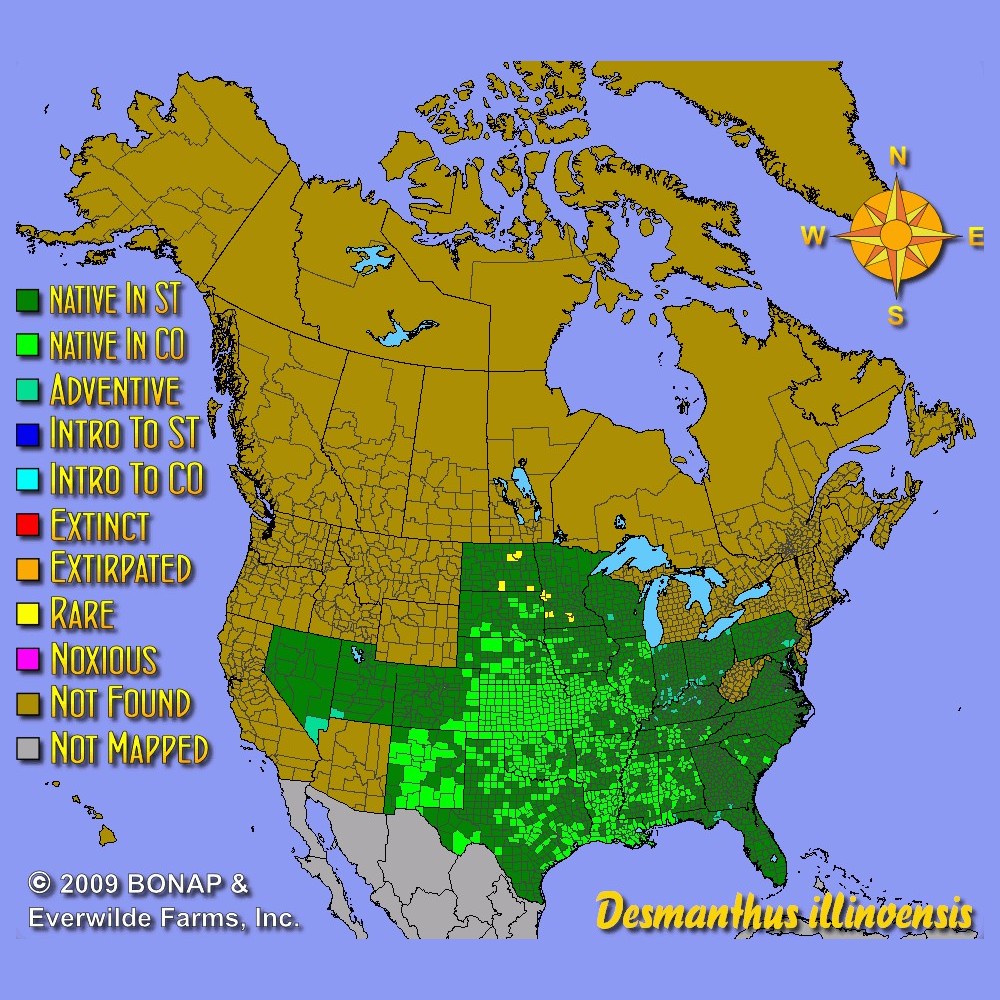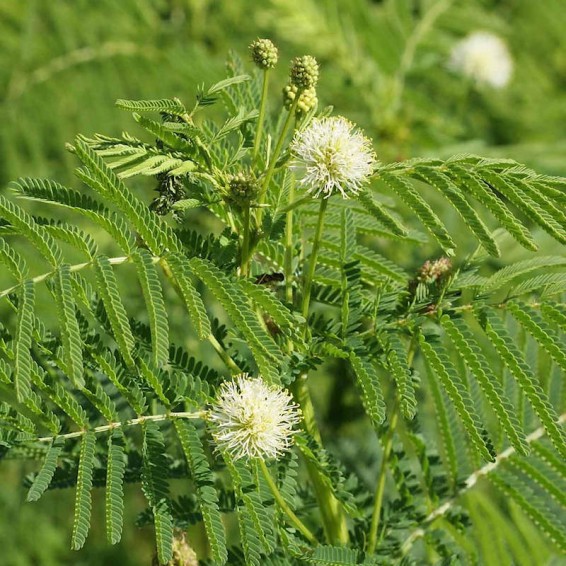Illinois Bundleflower Seeds
- HOW TO GROW
- FAST FACTS
- REVIEWS
HOW TO GROW
Sowing: Before planting the Illinois bundleflower seed for sale, pour 180 degrees F water over the seeds and soak them overnight to soften the seed coat and speed germination. After the last frost of spring, direct sow 1/4" deep and keep the soil consistently moist until germination, which should occur within 10-15 days. To start the seed indoors, sow them in a flat 4-6 weeks before the last frost of spring; keep the soil lightly moist and at a temperature of 70 degrees F until germination. Thin or transplant seedlings.
Growing: This plant tolerates most soils with the exception of heavy clay. Water seedlings until they have become established; mature plants can tolerate some drought, but appreciate occasional watering in dry periods. In favorable locations, this plant will self-sow readily.
Harvesting: This sensitive plant quickly wilts when touched, and is best displayed in the garden or prairie rather than as a cut flower.
Seed Saving: After flowering, this plant will produce unique round clusters of twisted seed pods. When ripe, the dark brown pods will split and reveal the mature reddish brown seeds. Shake the heads over a container to remove the seeds. Store the cleaned seeds in a cool, dry place.
FAST FACTS
Common Names: Prairie Mimosa, Spider Bean
Latin Name: Desmanthus illinoensis
Species Origin: US Native Wildflower
Type: Native Wildflowers
Life Cycle: Perennial
USDA Zones: 4, 5, 6, 7, 8, 9
US Regions: Arid/Desert, Plains/Texas, Midwest, Northeast, Southeast
Seeds per Ounce: 4,700
Stratification: No Stratification
Germination Ease: No Stratification
Sunlight: Full Sun
Height: 48 Inches
Color: Cream, Yellow
Bloom Season: Blooms Late Summer
Fast shipping
Seeds were delivered quickly and well packaged. Can't wait to watch them grow
Great
arrived promptly and all germinated
more thank you, pre planter here
I been lookin for good information I'm trying my green thumb out this article was exactly what I needed started up my water and going to plant in three different "waves"- idk.. . as I am in a slightly northern state concerns with the cold going to put a lot seed out and refine my technique from .. well your guide I'm following it exactly thank you . and late summer I can write a follow up. with an abundance of bundleflower. wish me luck
Raz out.
DESCRIPTION

HOW TO GROW
Sowing: Before planting the Illinois bundleflower seed for sale, pour 180 degrees F water over the seeds and soak them overnight to soften the seed coat and speed germination. After the last frost of spring, direct sow 1/4" deep and keep the soil consistently moist until germination, which should occur within 10-15 days. To start the seed indoors, sow them in a flat 4-6 weeks before the last frost of spring; keep the soil lightly moist and at a temperature of 70 degrees F until germination. Thin or transplant seedlings.
Growing: This plant tolerates most soils with the exception of heavy clay. Water seedlings until they have become established; mature plants can tolerate some drought, but appreciate occasional watering in dry periods. In favorable locations, this plant will self-sow readily.
Harvesting: This sensitive plant quickly wilts when touched, and is best displayed in the garden or prairie rather than as a cut flower.
Seed Saving: After flowering, this plant will produce unique round clusters of twisted seed pods. When ripe, the dark brown pods will split and reveal the mature reddish brown seeds. Shake the heads over a container to remove the seeds. Store the cleaned seeds in a cool, dry place.
FAST FACTS
Common Names: Prairie Mimosa, Spider Bean
Latin Name: Desmanthus illinoensis
Species Origin: US Native Wildflower
Type: Native Wildflowers
Life Cycle: Perennial
USDA Zones: 4, 5, 6, 7, 8, 9
US Regions: Arid/Desert, Plains/Texas, Midwest, Northeast, Southeast
Seeds per Ounce: 4,700
Stratification: No Stratification
Germination Ease: No Stratification
Sunlight: Full Sun
Height: 48 Inches
Color: Cream, Yellow
Bloom Season: Blooms Late Summer
Reviews
Review
Fast shipping
Seeds were delivered quickly and well packaged. Can't wait to watch them grow
Review
Great
arrived promptly and all germinated
Review
more thank you, pre planter here
I been lookin for good information I'm trying my green thumb out this article was exactly what I needed started up my water and going to plant in three different "waves"- idk.. . as I am in a slightly northern state concerns with the cold going to put a lot seed out and refine my technique from .. well your guide I'm following it exactly thank you . and late summer I can write a follow up. with an abundance of bundleflower. wish me luck
Raz out.






